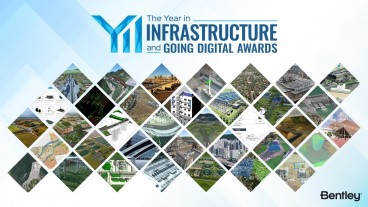Smart construction: How superstructures are built in just 11 days

The construction industry has undergone significant changes in recent years as digital transformation has reshaped all aspects of construction operations. The way infrastructure is designed and built has evolved dramatically due to key technologies that have transformed traditional construction into smart construction. Below, we highlight some of the technologies that have driven this transition.
Building Information Modeling (BIM) is a state-of-the-art tool that provides a digital representation of a structure, incorporating both physical and functional characteristics. Throughout the construction process, BIM optimizes project planning by minimizing errors and streamlining workflows. Additionally, by integrating real-time data and analytics, BIM supports sustainability efforts, leading to better resource management and more energy-efficient designs.
Artificial Intelligence (AI) and Machine Learning have revolutionized decision-making in the construction industry. Predictive analytics enhance project scheduling, resource allocation, and cost efficiency, while automation tools simplify repetitive tasks such as scheduling and budgeting. This allows professionals to focus on higher-value aspects of their projects.
Robotics and Automation have transformed construction sites by handling tasks such as bricklaying, demolition, and concrete pouring with exceptional precision. Automation further streamlines the construction process by enabling the off-site manufacturing of building components for on-site assembly. This approach accelerates project timelines, reduces material waste, and enhances worker safety by minimizing exposure to hazardous environments.
3D Printing has emerged as a cost-effective and sustainable construction method. 3D printers can produce custom components or even entire structures layer by layer, reducing material waste and promoting eco-friendly building practices.
Augmented Reality (AR) and Virtual Reality (VR) are also revolutionizing construction. AR overlays digital data onto the physical world, improving accuracy during construction, while VR creates immersive simulations that allow stakeholders to visualize and refine designs before construction begins. Both technologies help reduce errors and enhance communication among project teams.
The Internet of Things (IoT) connects construction sites, equipment, and workers through smart sensors and devices. IoT enables real-time data collection on site conditions, equipment performance, and worker safety while also supporting predictive maintenance. Additionally, drones are increasingly used in the industry to capture high-resolution aerial images for site surveys, inspections, and progress tracking. By improving mapping accuracy, drones help monitor project development in real time.
In conclusion, while smart construction represents the future of the industry, challenges such as labor shortages and supply chain disruptions remain. However, by integrating AI, robotics, IoT, and other cutting-edge innovations, the industry is achieving new levels of efficiency, safety, and sustainability.
Source: innovatorsmag.com
Want to read more like this story?

Digitalization could assist the construction industry reducing its carbon emissions
May, 28, 2024 | NewsIt is well known that the global construction industry significantly contributes to the world's car...

How drones have affected Construction Industry
Nov, 20, 2018 | NewsIn the last years, drones have become an advantageous device, widely used in construction industry,&...

Robotics technology transforms current construction industry
Sep, 14, 2018 | NewsResearchers at Purdue Polytechnic Institute are currently trying to lay the foundation for robotics...

Modular construction: An uprising project method
Jul, 20, 2018 | NewsExpects believe it is time to replace the conventional way a construction project is executed with a...

Structural Engineering Finalists in the 2023 Going Digital Awards in Infrastructure
Sep, 01, 2023 | NewsThe annual awards program honors the extraordinary work of Bentley software users advancing infrast...

10 state-of-the-art sustainable materials that will alter construction industry
Jun, 10, 2024 | NewsIn 2024, sustainable materials become state-of-the-art in construction since the construction indus...

Vermont Interstate Project to Use Lateral Slide Construction
May, 27, 2014 | NewsConstruction is about to begin on the first project in Vermont to use lateral slide construction. Th...

The Year in Infrastructure and Going Digital Awards (YII 2023)
Aug, 21, 2023 | EventThe Year in Infrastructure and Going Digital Awards keynote and breakout sessions will be live on T...

Construction management software - usBIM.resolver
Oct, 19, 2023 | SoftwareTrending

Spectacular interchanges around the world

New Release - STAAD.Pro 2024 - 2

ADINA 2025 for Structural WorkSuite

ADINA 2025 New Release!

Concrete Buildings as Rechargeable Batteries

Powerful earthquake shakes central Philippines, dozens killed

Indonesia school collapse: three fatalities and dozens injured

